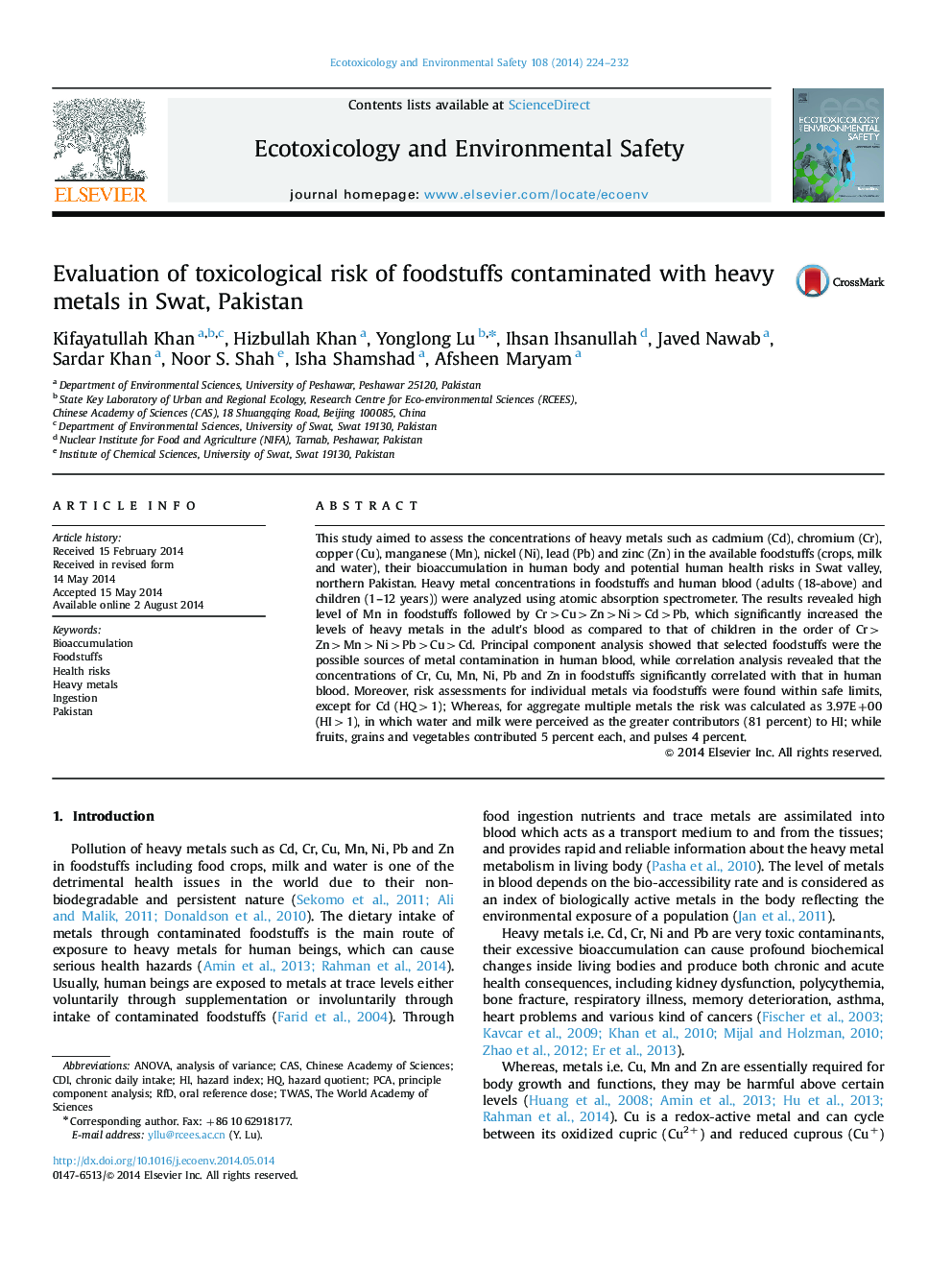| Article ID | Journal | Published Year | Pages | File Type |
|---|---|---|---|---|
| 4420107 | Ecotoxicology and Environmental Safety | 2014 | 9 Pages |
•Heavy metals were determined in foodstuffs and their bioaccumulation in human body.•Heavy metal concentrations were Mn>Cr>Cu>Zn>Ni>Cd>Pb in food stuffs.•Foodstuffs were the possible sources of metal contamination in human blood.•Metal intake via foodstuffs was found within safe limits, except for Cd.•Water and milk were perceived as the greatest contributors (81 percent) to HI.
This study aimed to assess the concentrations of heavy metals such as cadmium (Cd), chromium (Cr), copper (Cu), manganese (Mn), nickel (Ni), lead (Pb) and zinc (Zn) in the available foodstuffs (crops, milk and water), their bioaccumulation in human body and potential human health risks in Swat valley, northern Pakistan. Heavy metal concentrations in foodstuffs and human blood (adults (18-above) and children (1–12 years)) were analyzed using atomic absorption spectrometer. The results revealed high level of Mn in foodstuffs followed by Cr>Cu>Zn>Ni>Cd>Pb, which significantly increased the levels of heavy metals in the adult׳s blood as compared to that of children in the order of Cr>Zn>Mn>Ni>Pb>Cu>Cd. Principal component analysis showed that selected foodstuffs were the possible sources of metal contamination in human blood, while correlation analysis revealed that the concentrations of Cr, Cu, Mn, Ni, Pb and Zn in foodstuffs significantly correlated with that in human blood. Moreover, risk assessments for individual metals via foodstuffs were found within safe limits, except for Cd (HQ>1); Whereas, for aggregate multiple metals the risk was calculated as 3.97E+00 (HI>1), in which water and milk were perceived as the greater contributors (81 percent) to HI; while fruits, grains and vegetables contributed 5 percent each, and pulses 4 percent.
